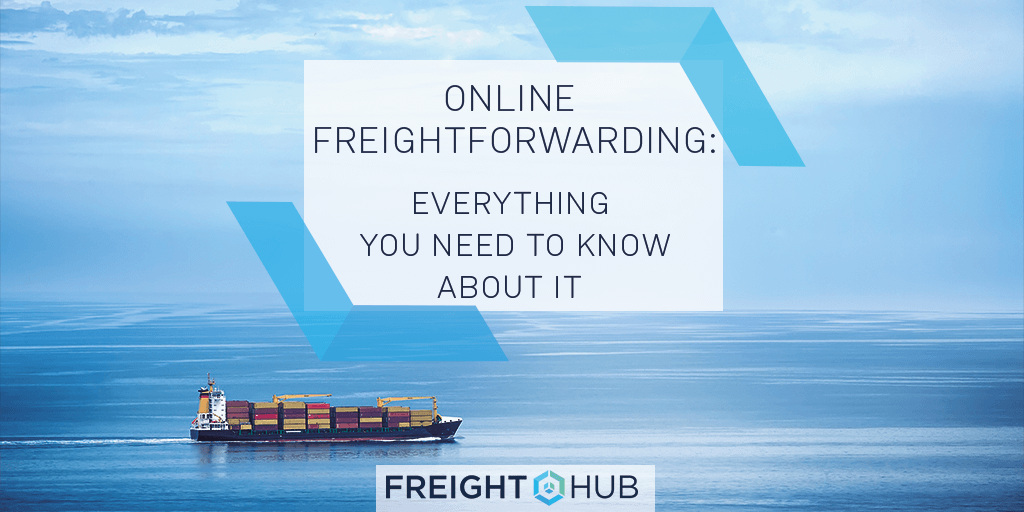The logistics industry is facing a labor shortage while simultaneously struggling to reduce its carbon footprint. One obvious solution is to maximize the use of existing infrastructure and workers, but until recently, companies have struggled to do so. Now, digital freight forwarding is pointing the way forward, using the latest technology to maximize efficiency, and reduce waste.
Transportation as a function of supply chain management is in a state of crisis. Although it might not know it yet. With volumes rising across all modes, and more shippers than ever requiring services, thanks to a strong economy and changing consumer demands, it might appear that our sector is entering our halcyon days. But there’s trouble on the horizon.
Two weaknesses that are already affecting supply chains and their bottom lines, and are steadily worsening, are human and environmental factors.
In other words, rising demand for logistics and transportation services is requiring more human talent than the labor market can provide, while increasing the industry’s carbon footprint.
Talent is one of the biggest challenges facing logistics service providers today. Logistics is an increasingly complex process, with e-commerce retailers and others requiring increasingly complex services. Companies are investing billions in tech to meet their demands. But hiring talented people to run these positions is the industry’s Achilles heel, and there’s still much that can’t be automated – yet.
On the other side of the equation, throwing more employees at the problem is not a long-term solution, because that just means more trucks, warehouses, and infrastructure. And while all three conditions are necessary, without the right data and information, they will be inefficient, which from an environmental perspective is unacceptable.
Together, these challenges push up transportation and supply chain management costs on both a financial, and existential level.
We’ve Got to Do More with Logistics.
These are challenges that we will face well into the future, but a proactive approach now could offset serious problems in the future. As logistics companies, we face certain constraints. For starters, we still need to book and manage the transport of our customers’ freight, as well as other value-added services that we provide. That means, even for online freight forwarding, we’ll still need people, and we still need trucks and other logistics.
That’s why we consider the digitalization of freight to be one of the most important trends to hit the industry, possible ever. At FreightHub, digital freight forwarding has allowed us to explore novel ways to reduce waste, costs, and maximize existing human talent and trucking capacity.
It’s worth examining how that works, because as more logistics processes are digitalized, we need to take advantage of that trend to make our sector more efficient, environmentally friendly, and a progressive partner for supply chain management.
What’s So Great About Online Freight Forwarding?
Online freight forwarding isn’t that different from conventional forwarding in terms of the services provided. At its basic level, they are still moving shipments of real products from point A to point B. The difference is that the former approaches the task from a completely digital perspective.
It means building a digital data warehouse with millions of data points. As a result, shippers can select from different modes of transport, add on services, receive quotes, and book shipments in a matter of minutes on an online platform.
Not a long time ago, there were entire departments that would call around and price out shipments. And right there, we start to see how digitalization addresses the problems facing the logistics industry – if you are already struggling with hiring enough people, you don’t want them sitting on phones doing processes that a computer can do faster and more efficiently. You want those employees making complex decisions, and in customer facing roles.
Use a Digital Mindset and Other Redundant Roles Start to Show Up
Take sales, for example. At FreightHub, sales and acquisition of customers are digitalized. Most major forwarding companies have massive sales departments. That means hundreds of people making calls, hundreds of people writing quotes, and hundreds of people commuting thousands of miles every day.
Despite the headlines, most service providing companies don’t actually engage in systemic layoffs when they automate processes. Instead, they reallocate redundant workers to new positions that allow the company to grow and expand. In today’s labor market, employers are loathed to let go of good employees.
Digital freight forwarding lets companies do exactly this. Shippers are facing the same labor shortages, and they are looking to automate with as much enthusiasm as their counterparts in the logistics industry.
At FreightHub, we’re not all robots, and if you want to speak to someone, we’ve got the best customer service team in the business. What this means is that our people are talking to people who want to hear from them, not cold calling and following up with quotes that would be better handled by a computer but to solve problems.
The Asset Free Supply Chain Logistics Model
Digitalization also allows forwarders to operate with what is called an “asset free” model. Here’s how that works. From the shipper’s warehouse to the final destination of his or her shipment, the cargo passes through a wide variety of infrastructure including aircraft, boats, trucks, trains, warehouses, and ground handling, and more.
While conventional forwarders often own warehousing, or other infrastructure, they still pay other companies to handle the shipment in areas where they might not have the necessary warehousing, trucking capacity, or customs clearance expertise.
Asset-free freight forwarding goes a step further. This model works because digital freight forwarders have massive data sets that tell them where there’s capacity, were there’s demand, and who is available to handle cargo at any given point or time.
Digital freight forwarders then empower the shipper to make that choice for themselves when they book a shipment. If they want a shipment expedited, the digital freight platform gives them options. If they can defer the payment, those options are all visible as well. It’s the shipper’s decision, and with hundreds or more choices, he or she can decide based on what’s available and what they are charging.
The digital freight forwarder’s role here is to empower the shipper through its extensive data warehouse.
How Does This Logistics Model Reduce Carbon Emissions?
Let’s use hitchhiking as an analogy. The hitch hiker stands on the side of the road, and catches a lift from a passing car. Since the car and the hitchhiker are headed the same direction, the hitchhiker’s travel – at least in theory – doesn’t add an additional environmental cost.
Asset free forwarding isn’t quite as efficient, but it’s as close as you can get when it comes to logistics. That’s because asset-free forwarders identify and utilise unused warehouses, ships, and other infrastructure, and resell it to shippers.
The higher the load factor on an aircraft, and the higher the utilization rate in a warehouse, the lower the demand for additional infrastructure. Digital freight forwarders use their extensive market data to fill these gaps, get a few extra containers on a ship, or load one more pallet onto a truck, so that if it’s going to float or fly or roll, there’s less wasted space less impact on the environments.
This works because asset free forwarders have expertise and information. Once you add digitalization, it’s possible to scale this model up to the next level at a global scale.
And There’s More to Online Freight Forwarding
There’s another issue facing shippers that digital freight forwarding improves. FreightHub’s portal uses proprietary algorithms to help customers select connectivity. After they enter the origin and destination details, they see suggested transportation options that include details down to the ship the goods will be transported on.
Freight rates are negotiated directly with carriers such as truckers, rail lines and carriers. Digital freight forwarding works through partnerships with customs authorities, insurance companies and value-added service providers, all of which can be booked and monitored through FreightHub’s portal.
Tracking shipments has never been easier. Not only does digital freight forwarding allow customers to track shipments in real-time, they can also visually monitor the journey regardless if it’s a truck or ocean vessel movement via a Google Maps overlay that allows them to compare planned and actual arrival times.
Digital freight forwarding provides a platform for supply chain partners and customers to collaborate, share documents and issue payment with the portal. Special instructions such as handling and/or storage, required customs documents, the packing list and other such documents can be uploaded, shared, or emailed to third parties. By having all documents and instructions in one spot, those involved in the freight movement have more time to focus on exception handling, customer relations, and business development rather than paperwork.
We’re Heading in The Right Direction
But there’s still a long way to go. At this point, there’s a pretty clear correlation between efficiency, environmental protection, and tackling the impending labor shortage. While the notion of “digital” might seem daunting, in many ways it’s just the next step towards doing a better job of what we already do as an industry.
At FreightHub, we were one of the first digital freight forwarders to tackle these problems, but today, we are encouraged to see the companies across the industry responding to these developments. That means we’re adding more partners every day, which translates into better service, lower costs, and a greener future.








